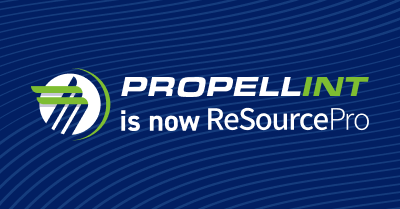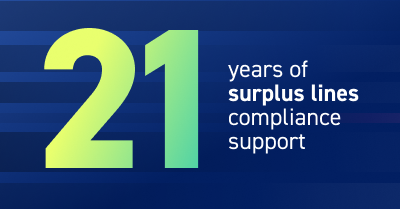Cheryl Kusick is Director, Operations Advisory at ReSource Pro. She focuses on supporting clients in change management, developing standardized effective process, leading end-to-end value stream mapping, and developing success measurements.
Tools for Strengthening Your Operations
When it comes to improving operational efficiency, no two methodologies match the popularity of lean and Six Sigma. And for good reason. Both are proven methods for creating better outcomes and are utilized by the likes of Toyota, 3M, and Nike.
Lean and Six Sigma share similar objectives, but apply different approaches, which we’ll explore here. It pays to know the benefits of each when looking to drive efficiency in your insurance organization.
How Does Lean Differ From Six Sigma?
Originating in the 1980s, Six Sigma is a method to identify and eliminate problems that negatively impact the end product, whether that’s a car or a customer’s experience buying insurance. A Six Sigma transformation is led by a team of internal experts or consultants brought in specifically for the initiative. The team continuously advises each level of the organization on process improvement that will further enhance the end product.
Ever heard the designation Six Sigma black belt? These designations indicate an individual’s mastery of Six Sigma techniques and create a hierarchy for the improvement team. Not all process improvement teams are the same, but typically black belts spearhead Six Sigma implementations and guide those who hold a more basic understanding of the methodology.
Six Sigma is a great way to improve the quality of an organization’s products, but it isn’t for everyone. The approach depends heavily on a centralized team for guidance, which can create limitations. For some organizations, when the implementation team disbands or the consultants leave, the momentum for process improvements comes to a halt.
By contrast, lean is a management system that focuses on driving continuous improvement from the bottom up, improving the delivery process of the product rather than the product itself.
By empowering team members at every level to embrace the principles and behaviors of the methodology, such as accountability and celebration of experimentation, organizations discovered they could better sustain the push for improvement.
With that said, it’s important to note that today’s practitioners of lean management and Six Sigma commonly blend the two methodologies, bringing out the strengths of each.
How Does Lean Benefit Insurance?
Lean was originally adopted by manufacturing companies, with Toyota being one of the most vocal advocates of going lean and eliminating waste from the production line. The lean way eventually gained popularity in other production lines and tech companies, too.
Over the last decade, however, lean has become increasingly popular in insurance. Feeling squeezed by zero interest rates and M&A activity happening at breakneck speeds, insurance organizations are seeking ways to improve efficiency and profitability. Up to 80% of the lean transformations have proven to be sustainable, so what can lean management do for you?
1. Better understand your end-to-end process
The first step in implementing lean is end-to-end process mapping—or determining your value stream. The value stream is the step-by-step process by which an organization delivers a product or service. Analyzing it can reveal a wealth of inefficiencies. For instance, one insurance organization documented their entire renewal to bind process and realized it involved 100 key activities and 1,000+ processing steps! The main purpose of mapping the value stream is to create more predictable outcomes by clearly showing how a single step in the process can cause a ripple both upstream and downstream.

2. Keep a pulse on your No.1 metric
Do you know your customers’ expectations? Many organizations wave this question away by stating that because they receive few complaints or have a good retention rate, their customers are satisfied. But no news doesn’t always mean good news. In some cases, customers are only borderline pleased, and the next setback could cause them to walk away.
Organizations can be so focused on generating new revenue that they can overlook how to effectively capture the voice of the customer. Creating a plan for tracking customer opinions is an important aspect of lean because customers often have valuable insight into areas of your organization that need improvement.

3. Collaborate more effectively
With lean, every employee in the organization is responsible for embracing the methodology. Think of it as creating a culture that naturally fosters improvement rather than a set of steps and rules for achieving it. Lean-oriented leaders:
- Celebrate employees who hold themselves accountable
- Constantly seek new ways to improve their work
- Are willing to experiment, even if they sometimes fail
By taking an all-hands-on-deck approach to improvement, not only will the impact be longer lasting, but potentially more innovative, as frontline employees can offer groundbreaking ideas on how to improve the value stream.

Think About Insurance Operations in Terms of Lean
Many different problems in an insurance organization can be broken down with lean.
For example, insurance producers typically need to gather a certain amount of data from clients in order to create a submission and receive a quote. But what if a producer only manages to get half of that data after a client visit? This then creates a negative impact on the account manager, who must find an alternate way to complete the submission, either by attempting to locate the missing data online, going back to the client, or if all else fails, sending an incomplete submission.
In this instance, we can see how one step in the value stream negatively affects another. A possible solution: establish stricter criteria for producers meeting with clients or even consult with account managers directly to brainstorm ideas.
In another scenario, say you discover that one or more account executives are over-servicing a single policyholder due to a rash of rush requests. By analyzing the relevant steps in the value stream, we can again take measures to solve the problem. First, you might talk to your executives to see whether they are firefighting, then establish best practices that would help them better achieve long-term results. Afterward, you could look to capture the voice of the customer, initiating a conversation with the client to determine which services they find valuable and determine whether they are a right fit for your organization.
By utilizing lean process management, you can easily identify and eliminate problems that may be hidden in your value stream. But perhaps more importantly, Lean increases the ability for your employees to drive value in the organization by giving them a stronger voice in decision-making and an opportunity to innovate.
Find out what these techniques can do for your organization. Contact ReSource Pro’s team of Six Sigma and lean process management experts who have extensive experience applying the principles of each to insurance workflows.




